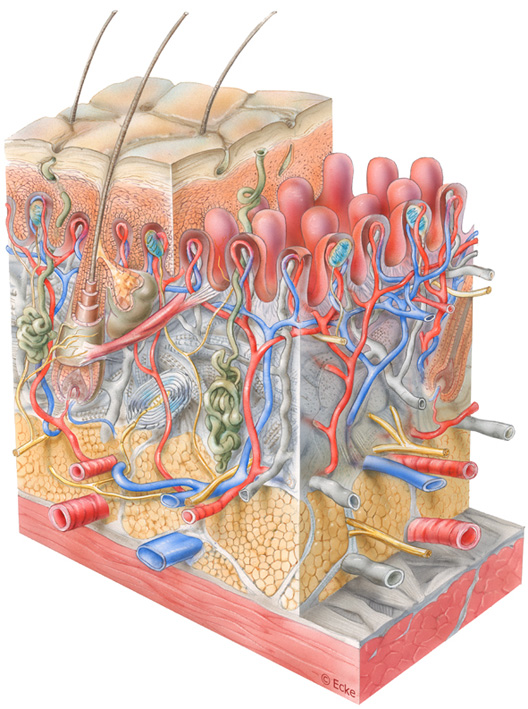Schematic diagram of the human skin

The integument forms the exterior skin surface. It is composed of the skin (cutis) and the subcutis (hypodermis) The cutis is composed of two layers, the epidermis and the dermis (corium).
The epidermis is the most superficial layer of the skin and about one-tenth of a millimeter thick. It provides the first barrier of protection from the invasion of foreign substances into the body. It consists of a multilayered keratinized squamous epithelium, the horny epithelial cells are the keratinocytes.
This principal cell type of the epidermis produces keratin which are proteins which make up most of the most exterior skin layer (horny layer). The progressive maturation of a keratinocyte is characterized by the accumulation of keratin, called keratinization. In the stratum corneum, another layer of the epidermis, the keratinocyte gradually migrates to the surface and is sloughed off in a process called desquamation.
The dermis (corium) is a complex network of collagen fibres, sweat glands, hair roots, nervous cells, nervous fibres and blood and lymph vessels. Cone-shaped loops of collagen fibres swerve out of the fibre network and rise as connective-tissue papillas into the deepenings of the epidermis; the epidermis and the corium are interlocked. Protuberances are recognizable, which are able to counteract mechanical movements such as attacks, tension or pression without damage.
The subcutis (tela subcutanea) is a loose, chamber-structured connective tissue and an important depot of fat.
Source: Leonhardt, H.; Histologie, Zytologie und Mikroanatomie des Menschen, Thieme 1990, 343-350.
